#Rudolf Caracciola
Text




Rudolf Caracciola & Wilhelm Sebastian vainqueur des Mille Miglia 1931 sur Mercedes-Benz SSKL (W 06 RS). - source Classic Trader via Gonta Garage.
30 notes
·
View notes
Text

1931 Zbraslav-Jiloviste Mercedes-Benz SSKL- Rudolf Caracciola
10 notes
·
View notes
Text
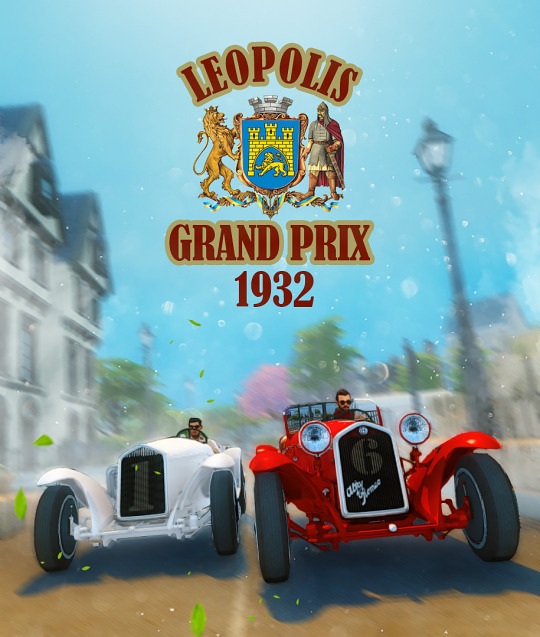





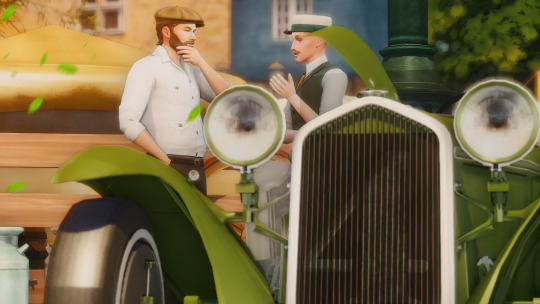

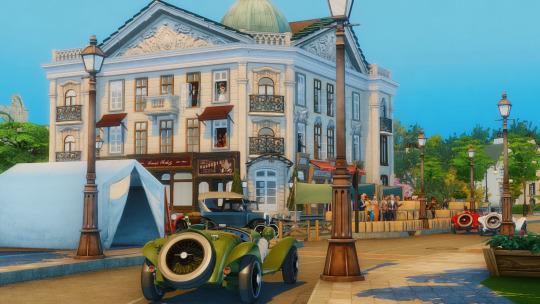






It's 1932 and you are on the Lviv Grand Prix
City races in Lviv were held for the first time in 1930. The first competition, on September 8, 1930, did not have the status of a Grand Prix, but was organized as a local competition for Polish riders (at that time, Lviv and Galicia were part of Poland). In June 1931, ring races through the streets of Lviv gained international status. Since 1932, they have received the name and status of the Grand Prix of Lviv. It is interesting that I.A.A.C. (International Association of Automobile Clubs - the predecessor of the FIA), granted the status of a Grand Prix to the city, that is, the competition was officially called the "Grand Prix of Lviv", and not the country, which was a unique phenomenon for that time.


The 1932 race was won by German driver Rudolf Caracciola on Alfa Romeo Monza.




Inspired by this post.
Alfa Romeo 8C2300 Spider by @lorysims
I'm WCIF friendly if you need any other mods from the screenshots~
#sims#the sims 4#sims 4#ts4#simblr#sims 4 historical#sims 4 screenshots#sims 4 scenery#sims 4 screenies#ts4 screenies#ts4 scenery#ts4 screenshots#vermutandherring
315 notes
·
View notes
Note
How are you taking the news about Kevin?
It hit me like a ton of bricks, even if it is not a big surprise it still hits.
Especially because I will most likely never see him irl in F1.
i have avoided talking about this because i wanted to write a long post about it, but the more i think about it, the more i feel like it's the right time for him to say goodbye to f1. so I'll keep it short and sweet, and use matt bishop's words about k-mag.
among the many drivers with whom i have worked in my long f1 career, magnussen is without doubt the most passionately besotted with racing for racing’s sake. moreover, having tried my best to cheer him up in what was for him an annus horribilis, 2015, when he was bored and frustrated in the role of mclaren’s f1 reserve driver, i fervently hope that he does not agree to take on the kind of quasi-managerial role to which komatsu has apparently alluded. let’s be blunt. kevin is an old-school racer. as i say, his racing hero is stirling moss, who retired 30 years before he was born. many times, over a coffee or a beer, i have held his rapt attention by reeling off the stories i know so well and love so much, about antonio ascari, tazio nuvolari, achille varzi, bernd rosemeyer, rudolf caracciola, b bira, alberto ascari, juan manuel fangio, stirling moss, jim clark, graham hill, jackie stewart, jochen rindt, ronnie peterson, james hunt, carlos reutemann, mario andretti, gilles villeneuve, ayrton senna, michael schumacher, mika hakkinen, and many more. he absolutely loves all that. by contrast the only aspect of 21st-century f1 that he genuinely enjoys is the bit in the cockpit, even though he has raced a podium-worthy f1 car only once, in his first ever grand prix, since when he has started 175 more, the highlights being four fifth places.
k-mag is a racing driver, not just a f1 driver. i'm tired of seeing him struggle in a car that can sometimes make it to the points, while he sacrifices so much time with his girls. i want him to retire from f1, and go dominate in another racing series that allows him more freedom to be at home as well. i don't want him to take on an advisor role, at least not if that keeps him from racing.
kevin made his f1 debut 10 years ago, and he has a podium and a pole, despite being in a backmarker car for most of his f1 career. while i will miss him during the f1 weekends, i'd be happy to cheer for him wherever he goes next. he will always be a racing driver before he's a f1 driver.
73 notes
·
View notes
Text
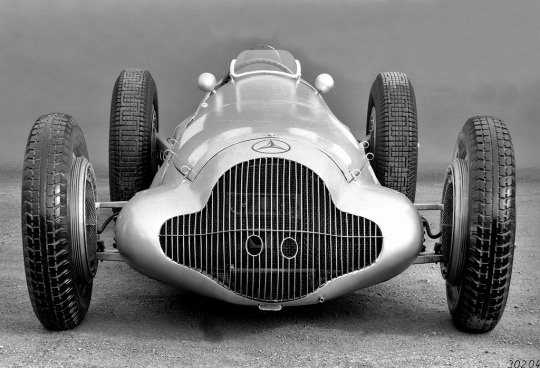

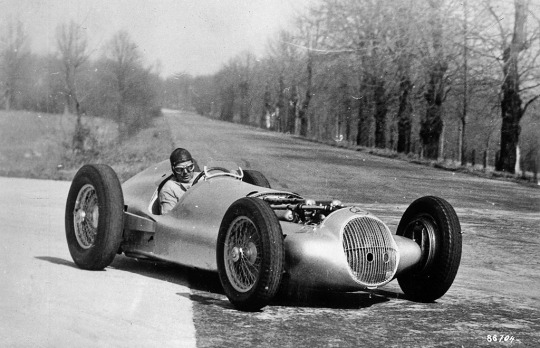
1938 Mercedes-Benz W154
In September 1936, the AIACR (Association Internationale des Automobile Clubs Reconnus), the governing body of motor racing, set the new Grand Prix regulations effective from 1938. Key stipulations included a maximum engine displacement of three liters for supercharged engines and 4.5 liters for naturally aspirated engines, with a minimum car weight ranging from 400 to 850 kilograms, depending on engine size.
By the end of the 1937 season, Mercedes-Benz engineers were already hard at work developing the new W154, exploring various ideas, including a naturally aspirated engine with a W24 configuration, a rear-mounted engine, direct fuel injection, and fully streamlined bodies. Ultimately, due to heat management considerations, they opted for an in-house developed 60-degree V12 engine designed by Albert Heess. This engine mirrored the displacement characteristics of the 1924 supercharged two-liter M 2 L 8 engine, with each of its 12 cylinders displacing 250 cc. Using glycol as a coolant allowed temperatures to reach up to 125°C. The engine featured four overhead camshafts operating 48 valves via forked rocker arms, with three cylinders combined under welded coolant jackets, and non-removable heads. It had a high-capacity lubrication system, circulating 100 liters of oil per minute, and initially utilized two single-stage superchargers, later replaced by a more efficient two-stage supercharger in 1939.
The first prototype engine ran on the test bench in January 1938, and by February 7, it had achieved a nearly trouble-free test run, producing 427 hp (314 kW) at 8,000 rpm. During the first half of the season, drivers such as Caracciola, Lang, von Brauchitsch, and Seaman had access to 430 hp (316 kW), which later increased to over 468 hp (344 kW). At the Reims circuit, Hermann Lang's W154 was equipped with the most powerful version, delivering 474 hp (349 kW) and reaching 283 km/h (176 mph) on the straights. Notably, the W154 was the first Mercedes-Benz racing car to feature a five-speed gearbox.
Max Wagner, tasked with designing the suspension, had an easier job than his counterparts working on the engine. He retained much of the advanced chassis architecture from the previous year's W125 but enhanced the torsional rigidity of the frame by 30 percent. The V12 engine was mounted low and at an angle, with the carburetor air intakes extending through the expanded radiator grille.
The driver sat to the right of the propeller shaft, and the W154's sleek body sat close to the ground, lower than the tops of its tires. This design gave the car a dynamic appearance and a low center of gravity. Both Manfred von Brauchitsch and Richard Seaman, whose technical insights were highly valued by Chief Engineer Rudolf Uhlenhaut, praised the car's excellent handling.
The W154 became the most successful Silver Arrow of its era. Rudolf Caracciola secured the 1938 European Championship title (as the World Championship did not yet exist), and the W154 won three of the four Grand Prix races that counted towards the championship.
To ensure proper weight distribution, a saddle tank was installed above the driver's legs. In 1939, the addition of a two-stage supercharger boosted the V12 engine, now named the M163, to 483 hp (355 kW) at 7,800 rpm. Despite the AIACR's efforts to curb the speed of Grand Prix cars, the new three-liter formula cars matched the lap times of the 1937 750-kg formula cars, demonstrating that their attempt was largely unsuccessful. Over the winter of 1938-39, the W154 saw several refinements, including a higher cowl line around the cockpit for improved driver safety and a small, streamlined instrument panel mounted to the saddle tank. As per Uhlenhaut’s philosophy, only essential information was displayed, centered around a large tachometer flanked by water and oil temperature gauges, ensuring the driver wasn't overwhelmed by unnecessary data.
31 notes
·
View notes
Text
Events 1.28 (after 1920)
1920 – Foundation of the Spanish Legion.
1922 – Knickerbocker Storm: Washington, D.C.'s biggest snowfall, causes a disaster when the roof of the Knickerbocker Theatre collapses, killing over 100 people.
1932 – Japanese forces attack Shanghai.
1933 – The name Pakistan is coined by Choudhry Rahmat Ali Khan and is accepted by Indian Muslims who then thereby adopted it further for the Pakistan Movement seeking independence.
1935 – Iceland becomes the first Western country to legalize therapeutic abortion.
1938 – The World Land Speed Record on a public road is broken by Rudolf Caracciola in the Mercedes-Benz W125 Rekordwagen at a speed of 432.7 kilometres per hour (268.9 mph).
1941 – Franco-Thai War: Final air battle of the conflict. A Japanese-mediated armistice goes into effect later in the day.
1945 – World War II: Supplies begin to reach the Republic of China over the newly reopened Burma Road.
1956 – Elvis Presley makes his first national television appearance.
1958 – The Lego company patents the design of its Lego bricks, still compatible with bricks produced today.
1960 – The National Football League announces expansion teams for Dallas to start in the 1960 NFL season and Minneapolis-St. Paul for the 1961 NFL season.
1964 – An unarmed United States Air Force T-39 Sabreliner on a training mission is shot down over Erfurt, East Germany, by a Soviet MiG-19.
1965 – The current design of the Flag of Canada is chosen by an act of Parliament.
1977 – The first day of the Great Lakes Blizzard of 1977, which dumps 3 metres (10 ft) of snow in one day in Upstate New York. Buffalo, Syracuse, Watertown, and surrounding areas are most affected.
1980 – USCGC Blackthorn collides with the tanker Capricorn while leaving Tampa, Florida and capsizes, killing 23 Coast Guard crewmembers.
1981 – Ronald Reagan lifts remaining domestic petroleum price and allocation controls in the United States, helping to end the 1979 energy crisis and begin the 1980s oil glut.
1982 – US Army General James L. Dozier is rescued by Italian anti-terrorism forces from captivity by the Red Brigades.
1984 – Tropical Storm Domoina makes landfall in southern Mozambique, eventually causing 214 deaths and some of the most severe flooding so far recorded in the region.
1985 – Supergroup USA for Africa (United Support of Artists for Africa) records the hit single We Are the World, to help raise funds for Ethiopian famine relief.
1986 – Space Shuttle program: STS-51-L mission: Space Shuttle Challenger disintegrates after liftoff, killing all seven astronauts on board.
1988 – In R v Morgentaler the Supreme Court of Canada strikes down all anti-abortion laws.
2002 – TAME Flight 120, a Boeing 727-100, crashes in the Andes mountains in southern Colombia, killing 94.
2006 – The roof of one of the buildings at the Katowice International Fair in Poland collapses due to the weight of snow, killing 65 and injuring more than 170 others.
2021 – A nitrogen leak at a poultry food processing facility in Gainesville, Georgia kills six and injures at least ten.
2023 – Protests begin after police beat and kill Tyre Nichols.
0 notes
Text
How Germany's Famous Autobahns Came To Be
The idea for the construction of the autobahn was first conceived in the mid-1920s during the days of the Weimar Republic, but the construction was slow, and most projected sections did not progress much beyond the planning stage due to economic problems and a lack of political support.
One project was the private initiative HaFraBa which planned a "car-only road" crossing Germany from Hamburg in the north via central Frankfurt to Switzerland. Parts of the HaFraBa were completed in the late 1930s and early 1940s, but construction eventually was halted by World War II. The first public road of this kind was completed in 1932 between Cologne and Bonn and opened by Konrad Adenauer on 6 August 1932.
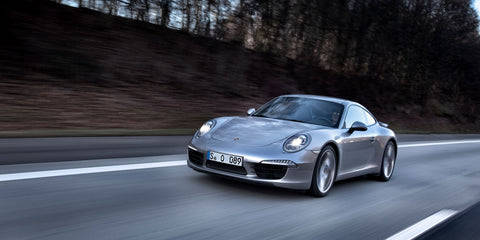
Today, that road is the Bundesautobahn 555. This road was not yet called Autobahn and lacked a centre median like modern motorways, but instead was termed a “Kraftfahrstraße” ("motor vehicle road") with two lanes each direction without intersections, pedestrians, bicycles, or animal-powered transportation.
Just days after the 1933 Nazi takeover, Adolf Hitler enthusiastically embraced an ambitious autobahn construction project, appointing Fritz Todt, the Inspector General of German Road Construction, to lead it.
By 1936, 130,000 workers were directly employed in construction, as well as an additional 270,000 in the supply chain for construction equipment, steel, concrete, signage, maintenance equipment, etc. In rural areas, new camps to house the workers were built near construction sites. The job creation program aspect was not especially important because full employment was almost reached by 1936.
Contrary to popular belief the autobahns were not primarily intended as major infrastructure improvement of special value to the military as often stated. Their military value was limited as all major military transports in Germany were done by train to save fuel. The propaganda ministry turned the construction of the autobahns into a major media event that attracted international attention.

The autobahns formed the first limited-access, high-speed road network in the world, with the first section from Frankfurt to Darmstadt opening in 1935. This straight section was used for high-speed record attempts by the Grand Prix racing teams of Mercedes-Benz and Auto Union until a fatal accident involving popular German race driver Bernd Rosemeyer in early 1938. The world record of 432 kilometres per hour (268 mph) set by Rudolf Caracciola on this stretch just prior to the accident remains one of the highest speeds ever achieved on a public motorway.
A similar intent in the 1930s existed for a ten-kilometre stretch of what is today Bundesautobahn 9 just south of Dessau—called the Dessauer Rennstrecke—had bridges with no piers, meant for land speed record cars like the Mercedes-Benz T80 to have made a record attempt in January 1940, abandoned due to the outbreak of World War II in Europe four months earlier.
During World War II, the median strips of some autobahns were paved over to allow their conversion into auxiliary airstrips. Aircraft were either stashed in numerous tunnels or camouflaged in nearby woods. However, for the most part during the war, the autobahns were not militarily significant.
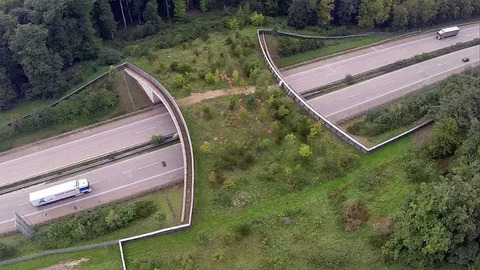
Motor vehicles, such as trucks, could not carry goods or troops as quickly or in as much bulk and in the same numbers as trains could, and the autobahns could not be used by tanks as their weight and caterpillar tracks damaged the road surface. The general shortage of gasoline in Germany during much of the war, as well as the low number of trucks and motor vehicles needed for direct support of military operations, further decreased the autobahn's significance.
As a result, most military and economic freight was carried by rail. After the war, numerous sections of the autobahns were in bad shape, severely damaged by heavy Allied bombing and military demolition. Furthermore, thousands of kilometres of autobahns remained unfinished, their construction brought to a halt by 1943 due to the increasing demands of the war effort.
In West Germany, most existing autobahns were repaired soon after the war. During the 1950s, the West German government restarted the construction program. It invested in new sections and in improvements to older ones. Finishing the incomplete sections took longer, with some stretches opened to traffic by the 1980s. Some sections cut by the Iron Curtain in 1945 were only completed after German reunification in 1990. Others were never completed, as more advantageous routes were found. Some of these incomplete sections to this very day stretch across the landscape forming a unique type of modern ruin, often easily visible on satellite photographs.

The autobahns of East Germany were neglected in comparison to those in West Germany after 1945. East German autobahns were used primarily for GDR military traffic and for state-owned farming or manufacturing vehicles. The speed limit on the GDR autobahns was 100 km/h; however, lower speed limits were frequently encountered due to poor or quickly changing road conditions. The speed limits on the GDR autobahns were rigorously enforced by the Volkspolizei, whose patrol cars were frequently found hiding under camouflage tarpaulins waiting for speeders.
1 note
·
View note
Text
Taffy with a beard, ft. Rudi Caracciola
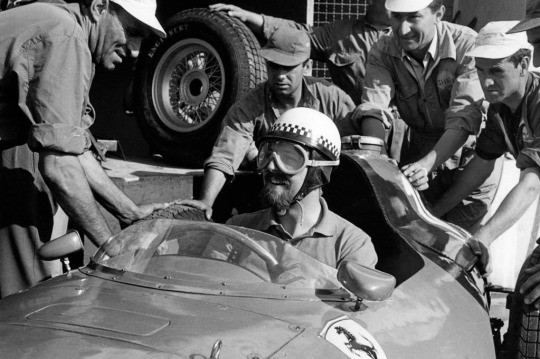


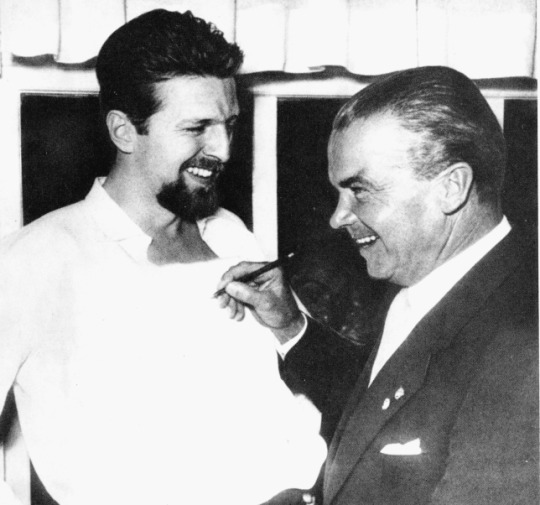
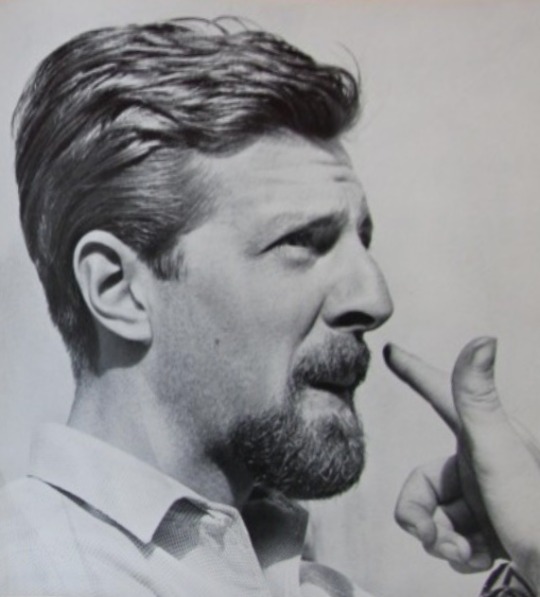
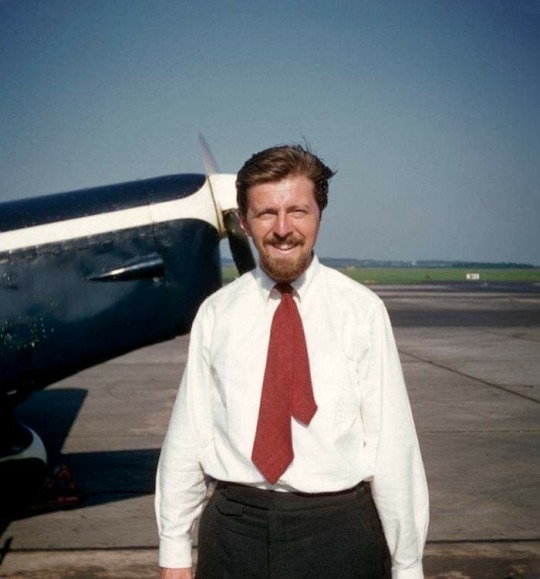
@taffyvontrips pretty sure you said you’ve never seen Taffy with a beard before? Well now you certainly have :)
12 notes
·
View notes
Text

Rudolf Caracciola 1901-1959. - source UK Racing History.
8 notes
·
View notes
Text
On the Way to a Sweep
On the Way to a Sweep
Before the war color photographs at motor races were very, very rare. The available film was very slow – its ASA rating of 8 made action shots almost impossible. In addition, the magazines of the time which covered motorsport did not print color images as to do so was too expensive. Nevertheless, some enterprising photographers persisted, knowing that their work probably would not be…

View On WordPress
2 notes
·
View notes
Text
Carreras perdidas en el tiempo: El triunfo nazi en Estados Unidos
En los Juegos Olímpicos de Berlín de 1936 el atleta estadounidense Jesse Owens se metió en la historia del deporte al ganar cuatro medallas de oro en las pruebas de 100 m, 200 m, salto de longitud y la carrera de relevos 4 × 100 m. Con esos triunfos el joven moreno de 23 años dejó en claro que la raza aria no era superior como quería hacerle creer al mundo Adolf Hitler, líder y canciller imperial…

View On WordPress
#Auto Union Type C#Bernd Rosemeyer#Copa Gordon Bennett#Copa Vanderbilt#George Washington Vanderbilt III#Gordon Bennett#Mercedes W125#Richard Seaman#Rudolf Caracciola#William Kissam Vanderbilt II
2 notes
·
View notes
Photo

GP Tripoli 1936 - Rudolf Caracciola vanqueur de la course
4 notes
·
View notes
Photo

1936 04 13 Monaco Grand Prix , Mercedes-Benz W25K nr8 Rudolf Caracciola (winner) - Andrea del Pesco
https://en.wikipedia.org/wiki/1936_Monaco_Grand_Prix
23 notes
·
View notes
Photo


The Grand Hotel Hairpin in 1937 and 1955.
1. Manfred von Brauchitsch leads Rudolf Caracciola (Mercedes-Bens W125).
2. Louis Chiron (Lancia D50) leads Stirling Moss (Mercedes-Benz W196).
#Grand Hotel Hairpin#Circuit de Monaco#Monaco Grand Prix#Grand Prix de Monaco#1937#1955#Manfred von Brauchitsch#Rudolf Caracciola#Mercedes-Bens W125#Louis Chiron#Stirling Moss#Lancia#Lancia D50#Mercedes-Benz W196#Mercedes-Benz#earlyracing
127 notes
·
View notes
